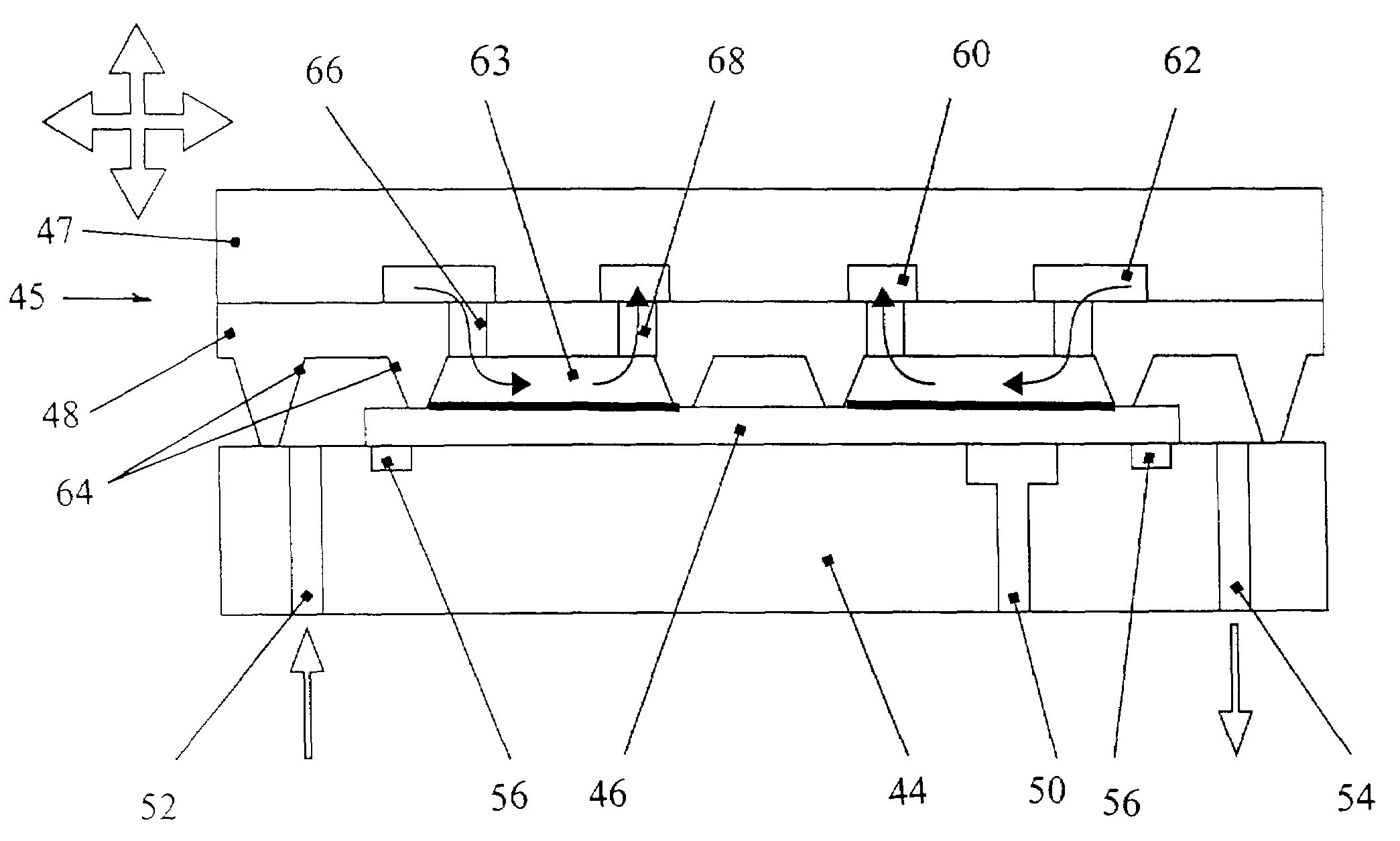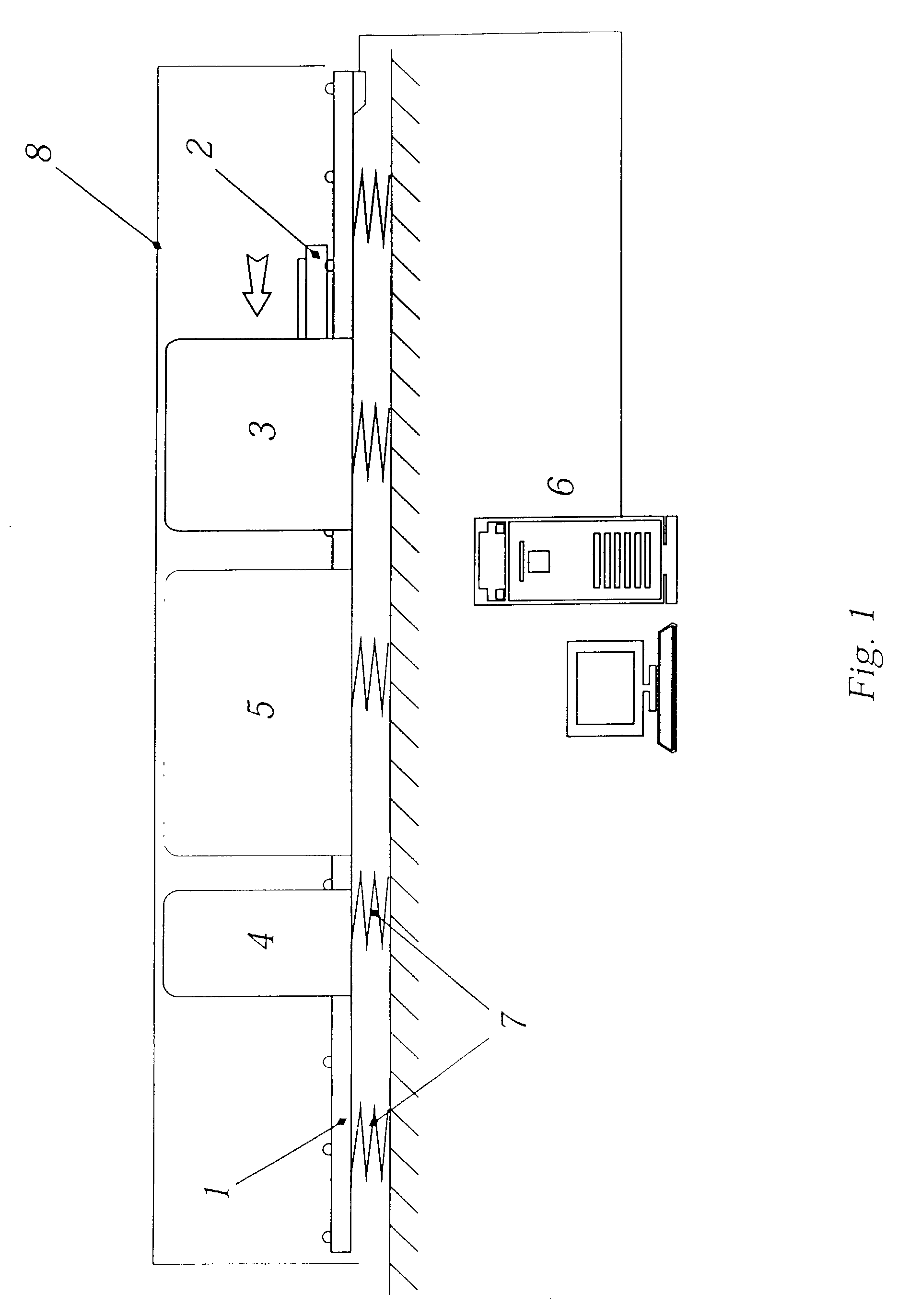Technological machinery for production of polarizers
a technology of polarizers and machinery, applied in the direction of polarising elements, instruments, coatings, etc., can solve the problems of compromising the quality of sealing, difficulty in removing polarizers from the sites of glued junctions, and additional expenditures for display fabrication, so as to enhance the effect of molecular orientation, enhance the optical anisotropy, and enhance the effect of polarizing effectiveness
- Summary
- Abstract
- Description
- Claims
- Application Information
AI Technical Summary
Benefits of technology
Problems solved by technology
Method used
Image
Examples
Embodiment Construction
[0039]The major parts of the apparatus for application of polarizing coating (FIG. 1) are: the stand 1 (the base), on which all the working systems are situated, table 2 (substrate holder) for substrate placement, the system of polarizing film formation 3, the system of localized removal of the polarizing film material 4, the system of zonal drying 5, means of the relative mechanical movement of the table on the stand (not shown), the control block 6, anti-vibration system 7, the means to protect the working area from dust 8. Additionally to that, the apparatus can comprise a system of automatic supply onto the table and removal from it of the working substrates, the LLC and the working area temperature stabilizer, as well as any other systems and mechanisms providing automatic processing of substrates, enhancing the quality of polarizers or productivity of the apparatus. In FIG. 1, the system of zonal drying is situated between the system of formation and the system of local remova...
PUM
| Property | Measurement | Unit |
|---|---|---|
| thickness | aaaaa | aaaaa |
| diameter | aaaaa | aaaaa |
| thickness | aaaaa | aaaaa |
Abstract
Description
Claims
Application Information
 Login to View More
Login to View More - R&D
- Intellectual Property
- Life Sciences
- Materials
- Tech Scout
- Unparalleled Data Quality
- Higher Quality Content
- 60% Fewer Hallucinations
Browse by: Latest US Patents, China's latest patents, Technical Efficacy Thesaurus, Application Domain, Technology Topic, Popular Technical Reports.
© 2025 PatSnap. All rights reserved.Legal|Privacy policy|Modern Slavery Act Transparency Statement|Sitemap|About US| Contact US: help@patsnap.com



